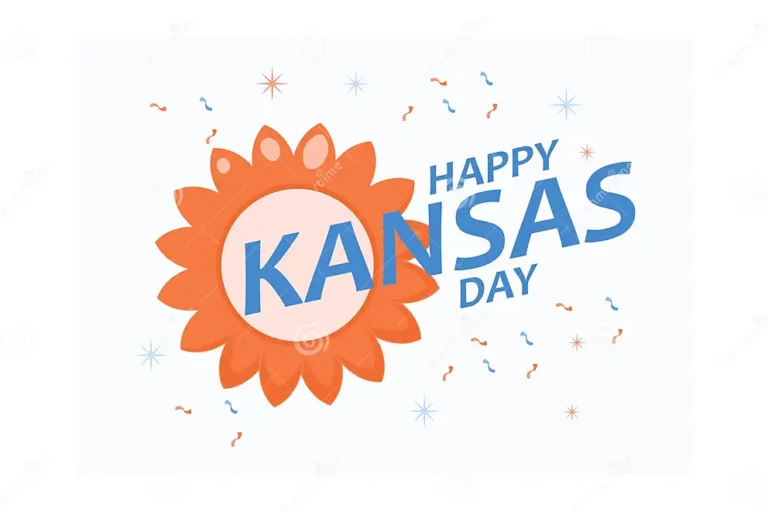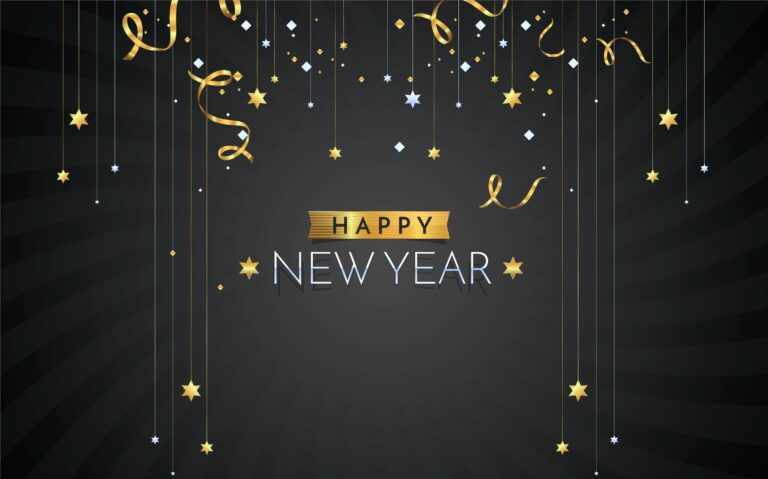Kansas Day is an annual celebration that takes place on January 29th. The holiday commemorates the establishment of the state of Kansas in 1861 and pays tribute to its rich history, traditions, and culture. On this special day, Kansans come together to honor their state’s achievements and reflect on its importance to the nation.

If you want to learn more about Kansas Day, its origins, and the various ways it is celebrated, stay tuned for our comprehensive guide. In this article, we will explore the history and traditions of Kansas Day, discover the unique symbols and famous Kansans that define the state, and share some exciting Kansas Day activities and events for you to participate in. Get ready to immerse yourself in the spirit of this beloved holiday!
Key Takeaways
- Kansas Day celebrates the establishment of the state of Kansas in 1861.
- The holiday holds significant cultural and educational value for Kansans and the nation.
- Through various traditions and celebrations, Kansas Day fosters a sense of community and pride among Kansans.
- Learning about the history and symbols of Kansas can deepen your appreciation for the state and its contributions.
- Participating in Kansas Day activities and events is a great way to connect with the local community and celebrate Kansas culture.
The Birth of Kansas Day
Kansas Day, celebrated annually on January 29th, honors the day the state of Kansas was admitted into the Union. This commemorative day holds a special place in the hearts of Kansans, both for its historical significance and cultural traditions.
The origins of Kansas Day can be traced back to the state’s early history, when it was known as the Kansas Territory. In the 1850s, Kansas became a battleground for pro-slavery and anti-slavery forces during the pre-Civil War era.
“Kansas was the pivot upon which the whole pro-slavery and anti-slavery question turned.”
– Charles Robinson, Kansas Governor (1861-1863)
The territory’s tumultuous past led to its official admission into the Union as a free state in 1861, marking a significant victory for the abolitionist movement. To commemorate this milestone, Kansas Day was established as an annual holiday.
| Year | Event |
|---|---|
| 1861 | Kansas admitted to the Union as a free state |
| 1877 | First official observance of Kansas Day |
Since then, Kansans have celebrated this historic day with pride and reverence. Schools, communities, and organizations host special events and activities to honor the state’s culture and heritage. Kansas Day has become an integral part of the state’s identity, showcasing the resilience, courage, and unity of its people.
The State of Kansas
Kansas, located in the Midwestern region of the United States, became the 34th state in the Union on January 29, 1861. The state was named after the Kansa Native American tribe that inhabited the area.
Kansas is known as the Sunflower State, due to its vast yellow fields that bloom in the summer and fall months. It is also home to the largest remaining stand of tallgrass prairie in North America – the Flint Hills. With a diverse landscape ranging from rolling hills and forests to expansive plains and arid deserts, Kansas has a rich variety of wildlife, crops, and natural resources.
Throughout its history, Kansas has played a significant role in shaping the nation. It was a hotbed of conflict during the Civil War, with pro-slavery and free-state forces clashing over the issue of slavery. The end of the Civil War marked the start of the cattle drives that brought millions of cattle from Texas to the eastern United States. The state also played a pivotal role in the early days of the women’s suffrage movement, with women in Kansas being granted voting rights in 1912, eight years before the passage of the 19th Amendment.
Kansas Demographics
| Ethnicity | % of Population |
|---|---|
| White | 84.7% |
| Black or African American | 6.3% |
| Hispanic or Latino | 12.1% |
| Asian | 2.8% |
| Native American | 0.8% |
The majority of Kansans identify as white, with small populations of Black or African American, Hispanic or Latino, Asian, and Native American residents. The top 5 most populous cities in Kansas are Wichita, Overland Park, Kansas City, Topeka, and Olathe.
The state of Kansas is home to a diverse range of communities, each with their own unique character and cultural heritage. From bustling urban areas to small farm towns, Kansans take pride in their state and the many contributions they have made to its history and development.
Kansas Day Traditions
Kansas Day is a special occasion for Kansans to celebrate their state’s rich history and cultural identity. From parades and concerts to special ceremonies and educational programs, there are various traditions associated with this commemorative day.
Parades and Concerts
Parades and concerts are a staple of Kansas Day celebrations. Communities across the state come together to organize colorful parades featuring floats, carriages, marching bands, and other attractions. Concerts are also a popular way to celebrate Kansas Day, with many events showcasing local musicians and artists.
Special Ceremonies
Special ceremonies are held at various locations to mark Kansas Day. These ceremonies may include flag-raising events, wreath-laying ceremonies, and other symbolic gestures that honor the state’s history and values.
Educational Programs
Kansas Day is also an opportunity for educational programs that teach students about the state’s heritage. Schools organize activities and curriculum units dealing with Kansas history, culture, and geography so students can gain a deeper understanding of the Sunflower State.
Kansas Day inspires Kansans to celebrate their roots, promote their heritage, and instill a sense of pride in future generations.
Famous Kansans
Kansas has been home to many notable figures, from actors to politicians, athletes to authors. Here are just a few of the famous Kansans you should know:
| Name | Field | Notable Work/Achievement |
|---|---|---|
| Amelia Earhart | Aviation | First female pilot to fly solo across the Atlantic Ocean |
| Dwight D. Eisenhower | Politics/Military | 34th President of the United States; Supreme Allied Commander in WWII |
| Gordon Parks | Photography/Film | Notable photographer and film director; first African American director of a major Hollywood production |
| Langston Hughes | Poetry/Literature | Noted writer and poet; known for his role in the Harlem Renaissance |
| Kristen Wigg | Comedy/Acting | Notable comedian and actress; known for her roles in “Bridesmaids” and “Saturday Night Live” |
| Clyde Tombaugh | Astronomy | Discovered Pluto in 1930 while working at Lowell Observatory in Arizona |
These are just a few of the many famous Kansans who have left their mark on history, each in their own unique way. From exploring the cosmos to fighting for civil rights, Kansans have made significant contributions to the world.
Symbols of Kansas
Kansas is known for its unique symbols that reflect the state’s culture, history, and natural beauty. These symbols represent the essence of the Sunflower State and convey a sense of pride among Kansans. Here are some of the most notable symbols of Kansas:
| Symbol | Description |
|---|---|
| Sunflower | The sunflower is the state flower of Kansas, symbolizing the state’s nickname as the “Sunflower State.” It represents the sun, the source of warmth, light, and life. |
| Bison | The bison is the state animal of Kansas, reflecting the state’s history as part of the Great Plains and the importance of bison to Native American cultures. It also represents strength and resilience. |
| Western meadowlark | The western meadowlark is the state bird of Kansas, known for its beautiful song and colorful appearance. It represents the state’s natural beauty and abundance. |
| Pioneer woman | The pioneer woman is the state emblem of Kansas, representing the strength and resilience of women who helped settle the state’s prairies and build communities. |
| Wheat | Wheat is the state’s official grain, reflecting the importance of agriculture to Kansas’s economy and history. It also represents abundance, nourishment, and sustenance. |
| Flag | The flag of Kansas features the state seal superimposed on a blue field. The seal represents the state’s history, industries, and values, while the blue reflects the sky and the state’s open spaces. |
These symbols are cherished by Kansans and are an integral part of the state’s identity and culture. Whether it’s the sunflower waving its golden petals in the breeze, the bison roaming across the prairies, or the pioneer woman standing proud against the elements, each symbol tells a story of Kansas and its people.
Kansas Day Celebrations
Kansas Day is a time for Kansans to come together and celebrate their state’s history, culture, and achievements. The festivities are as diverse and rich as the people of the Sunflower State.
Community Gatherings
Community gatherings are a popular way for Kansans to celebrate their state. From local festivals to parades, communities across Kansas honor their unique histories and traditions. One such example is the Wichita Riverfest, a week-long celebration filled with entertainment, food, and family activities.
School Events
Kansas Day is an important part of the school calendar and many schools hold special events to teach students about their state’s history. From reenactments of historical events to Kansas-themed arts and crafts, schools play an essential role in promoting Kansas Day and its significance.
Museum Exhibitions
Many museums across Kansas hold exhibitions and events in honor of Kansas Day. These exhibitions showcase the state’s rich history and cultural heritage, providing visitors with a deeper understanding of what makes Kansas unique. One such example is the Kansas Museum of History, which offers a variety of interactive exhibits and workshops that celebrate the state’s diverse past and present.
Kansas Day Cakes
No Kansas Day celebration is complete without a Kansas Day cake. These cakes are often decorated with the state’s flag or symbols such as the sunflower or bison. Schools, communities, and families can all partake in this sweet tradition, further cementing the bond between Kansans and their state.
Educational Importance of Kansas Day
Kansas Day is more than just a celebration of statehood – it’s also an opportunity for students to learn about the rich history and traditions of the Sunflower State. Many schools throughout Kansas incorporate Kansas Day into their curriculum, providing students with a deeper understanding and appreciation of their state and its unique characteristics.
By learning about Kansas Day, students can gain valuable insights into local history, culture, and geography. They can explore the various symbols that represent the state, including the sunflower, the bison, and the state seal. They can also learn about famous Kansans who have made significant contributions in various fields, from politics to entertainment.
Participating in Kansas Day festivities can help students develop a sense of pride and identity as Kansans. They can engage in various educational activities and crafts that help them connect with their state’s heritage in a fun and interactive way. From coloring pages to history projects, there are many ways to incorporate Kansas Day into the classroom and promote a deeper understanding of the state’s significance.
The Value of Kansas Day in Education
At its core, Kansas Day serves as a reminder of the importance of preserving and promoting local history and culture. By providing students with educational opportunities that showcase the rich diversity and unique qualities of Kansas, teachers can help instill a sense of civic pride and community engagement.
“Kansas Day provides a meaningful way for students to connect to their community and develop a sense of belonging. By learning about the history and traditions of their state, they can better understand the role they play in shaping its future.” – Jane Smith, Kansas Educator
Examples of Kansas Day Educational Activities
| Activity | Description |
|---|---|
| Kansas State Symbols Scavenger Hunt | Students can search for state symbols hidden throughout the classroom or school library, learning about their meaning and significance as they go. |
| Kansas History Timeline | Students can create a timeline of important events in Kansas history, from the formation of the state to contemporary milestones. |
| “My Kansas” Creative Writing Project | Students can write a short story, poem, or essay about what Kansas means to them, exploring their personal connections to the state and its traditions. |
As these examples demonstrate, there are many ways to celebrate and incorporate Kansas Day into the classroom. By doing so, teachers can help students develop a deeper appreciation and understanding of the state’s unique qualities and contributions.
Kansas Day Activities and Crafts
Celebrate Kansas Day with fun and interactive activities that the whole family can enjoy. From crafting to coloring, these activities provide a great way to learn about the state’s fascinating history while having fun at the same time.
Kansas Day Coloring Pages
Coloring pages are a great way to introduce young children to the symbols and landmarks of Kansas. You can find printable coloring pages online with various designs, including the state flag, sunflowers, and bison.
Kansas Day Crafts
There are various Kansas Day crafts that you can do with your family or friends. Try creating a sunflower-themed wreath for your front door, or making a bison out of papier mache. You could even make a miniature replica of Kansas using clay or Play-Doh.
State Symbols Trivia
| Symbol | Description |
|---|---|
| Sunflower | The sunflower is the state flower of Kansas and is a symbol of the state’s agricultural heritage. |
| Bison | The American bison is the state animal of Kansas and represents the state’s vast open spaces and wildlife. |
| Western Meadowlark | The Western Meadowlark is the state bird of Kansas and is known for its melodious song. |
Test your knowledge about the symbols of Kansas by playing trivia games with your family and friends. You can create your own questions or find trivia questions online.
Get creative and have fun while celebrating the rich history and culture of Kansas on Kansas Day!
Exploring Kansas Day Events
Kansas Day is the perfect time to explore the state and immerse yourself in the celebrations happening throughout the region. From crisp winter days to warm summer evenings, there are plenty of opportunities to experience the best of Kansas culture and history. Here are some of the top Kansas Day events to check out:
Kansas Day Festival
The Kansas Day Festival is an annual celebration held in Topeka, featuring live music, food vendors, and historical reenactments. Visitors can browse through handmade goods and crafts, take part in a scavenger hunt, or visit the Kansas museum for a look at the state’s rich history.
Pawnee County Historical Society’s Kansas Day Celebration
Located in Larned, this event is perfect for history buffs looking to learn more about Kansas. Visitors can take a tour of a historic fort, watch a live blacksmith demonstration, or attend a lecture on a topic related to Kansas history.
| Event | Date | Location |
|---|---|---|
| Kansas Day Festival | January 29th | Topeka |
| Pawnee County Historical Society’s Kansas Day Celebration | January 29th | Larned |
| Kansas Day Open House | January 29th | Dodge City |
| Museum After Hours: Kansas Day Celebration | January 29th | Wichita |
| Kansas Day at the Capitol | January 29th | Capitol City |
Kansas Day Open House
Head to Dodge City for the Kansas Day Open House, a free event featuring tours of a historic home, cowboy poetry readings, and traditional barbecue. Visitors can also take a wagon ride through the prairies, or watch a wild west shoot-out reenactment.
Museum After Hours: Kansas Day Celebration
Hosted by the Wichita-Sedgwick County Historical Museum, this event offers visitors a chance to explore the museum’s exhibits and learn about Kansas history. With live music, food and drinks, and hands-on activities, it’s a fun and interactive way to celebrate Kansas Day.
Kansas Day at the Capitol
Kansas Day at the Capitol in Capitol City is a family-friendly event that offers interesting and educational activities like historic storytelling sessions, visits from notable Kansans, and live music performances. Visitors can also take a tour of the stunning capitol building and attend a flag-raising ceremony.
Whether you’re a history buff, a music lover, or simply looking for a fun day out, there’s something for everyone at Kansas Day celebrations across the state. Don’t miss out on the chance to explore the best of Kansas culture and traditions.
Conclusion
In conclusion, Kansas Day is a special time for Kansans to celebrate their state’s rich history and cultural heritage. Through the various traditions, events, and educational opportunities, Kansans can deepen their understanding and appreciation of the unique contributions that their state has made to the country. By commemorating Kansas Day, we honor the pioneers, leaders, and innovators who have shaped the Sunflower State into what it is today. Let us continue to cherish and promote the legacy of Kansas Day for future generations to come.









